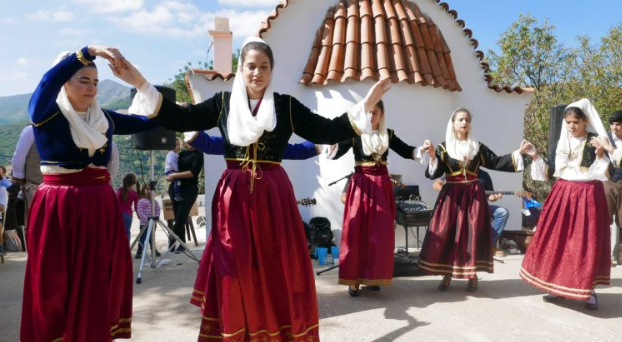Crete, the largest of the Greek islands, is renowned for its rich cultural heritage, stunning landscapes, and vibrant traditions. Among its many cultural treasures, the Cretan fashion scene stands out, reflecting a blend of ancient influences and modern trends. From traditional attire that tells the island’s history to contemporary styles that resonate with today’s fashion-forward individuals, Cretan fashion is a captivating tapestry of colors, fabrics, and designs.
Traditional Cretan Attire
Traditional Cretan clothing is a vivid representation of the island’s history and its people’s way of life. The traditional attire, often worn during cultural festivals, weddings, and special occasions, is characterized by its intricate designs and the use of high-quality, natural fabrics.
Men’s Traditional Attire
Cretan men’s traditional clothing typically includes the “vraka,” a type of baggy trousers that are cinched at the waist and gathered at the ankles. These trousers are usually paired with a white shirt, a waistcoat (known as a “meidanogileko”), and a distinctive headscarf called “sariki.” The sariki, often black or white, is adorned with fringes and is a symbol of bravery and mourning. Completing the ensemble, men wear leather boots known as “stivania,” which are durable and suitable for the rugged Cretan terrain.
Women’s Traditional Attire
Women’s traditional attire in Crete is equally elaborate and beautiful. The “sariki” headscarf also forms part of women’s attire, often more ornate with lace and embroidery. The main garment is the “sfakianopoula,” a long dress with a fitted bodice and a full skirt, typically in rich colors like deep red, blue, or green. This dress is often worn with a beautifully embroidered apron and a short jacket or vest known as “zipouni.” The attire is completed with jewelry, including necklaces, bracelets, and brooches, often passed down through generations as family heirlooms.
Contemporary Cretan Fashion
While traditional clothing is a vital part of Crete’s cultural identity, contemporary fashion on the island reflects a dynamic fusion of past and present. Modern Cretan designers are known for their ability to integrate traditional elements into their creations, producing stylish and unique attire that resonates with both locals and visitors.
Local Designers and Boutiques
Crete boasts a growing number of local designers and boutiques that are redefining the island’s fashion scene. These designers often draw inspiration from the island’s rich history and natural beauty, incorporating elements such as traditional embroidery, lace, and natural dyes into their modern designs. Boutiques in cities like Heraklion, Chania, and Rethymno showcase a range of clothing, from casual wear to high-end fashion, reflecting the island’s diverse stylistic influences.
Sustainable Fashion
Sustainability is a significant trend in contemporary Cretan fashion. Many designers and brands are committed to using eco-friendly materials and ethical production methods. Organic cotton, linen, and wool are commonly used, reflecting the island’s agricultural heritage. Additionally, there is a growing emphasis on slow fashion, with a focus on quality over quantity and timeless designs that can be worn for years.
Cretan Fashion Events
Fashion events and festivals play a crucial role in promoting Cretan fashion both locally and internationally. Events like the Heraklion Fashion Week and various cultural festivals provide platforms for designers to showcase their work. These events not only celebrate the island’s fashion but also foster a sense of community and support for local artisans and designers.
Fusion of Tradition and Modernity
The true essence of Cretan fashion lies in its seamless fusion of tradition and modernity. Contemporary designs often feature traditional patterns and techniques, such as hand-woven fabrics and embroidery, but are tailored in modern silhouettes and styles. This blend creates clothing that is both culturally significant and stylishly relevant.
For instance, modern interpretations of the “vraka” might be seen in trendy, loose-fitting trousers or jumpsuits, while traditional embroidery techniques are used to adorn contemporary dresses, blouses, and accessories. This fusion not only preserves Cretan heritage but also ensures its continuous evolution.
Conclusion
The Cretan fashion scene is a vibrant and evolving landscape that beautifully captures the island’s unique blend of history and modernity. From the intricate traditional attire that speaks to Crete’s rich cultural past to the innovative and sustainable designs of contemporary fashion, Cretan style is a testament to the island’s creativity and resilience. Whether through the revival of ancient techniques or the embrace of modern trends, the fashion of Crete continues to enchant and inspire, making it a distinctive and integral part of the island’s identity.


